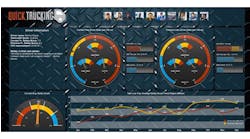The impact e-commerce has had on global economies makes me think that a redefinition is in order—or at least a rebranding. The original concept of “electronic commerce” seems almost old-fashioned now in light of its current scope. That “e” could almost stand for “equalizing” commerce, or “emerging” commerce, judging by a news story we just posted on our site.
It cites the results of the 2013 A.T. Kearney Foreign Direct Investment Confidence Index (FDICI), which reports the sentiments of senior executives at the world’s largest companies, particularly how they target new markets. More than three quarters of them see great potential in serving emerging markets.
“The traditional view of emerging markets as high risk/high return is shifting as developed economies become more volatile and less predictable,” the report states. “In factor after factor, including macroeconomic volatility, consumer demand, regulatory barriers, and taxation, corporate investors responding to the FDICI now see emerging markets having essentially the same level of risk as developed markets.”
The report goes on to say that thanks to prudent domestic policies and internal investments, developing markets have higher-income consumers that have become attractive targets for multinational investors.
No wonder retailers like Walmart are making footprints in those regions. Recently we quoted that retailer’s president and CEO of Global eCommerce, Neil Ashe, as saying that Walmart is building next-generation fulfillment networks which include e-commerce-dedicated facilities. “We will be investing more in e-commerce facilities so we can serve individual items instead of the cases we send to stores today,” he said. “The hardest part is getting an item to wherever the consumer wants to pick it up.”
But another challenge for companies going global with e-commerce will be to redesign their internal infrastructures—their conveyors, for example, so they can better handle the eaches of e-commerce. Even the players in that niche are reinventing themselves to take advantage of new global markets.
For example, another news story we ran recently announced that the Interroll Group, the Swiss manufacturer of material handling components, would acquire Colorado-based Portec Group International, Inc. This acquisition not only supports A.T. Kearney’s finding that investment in U.S. markets is growing, but according to Tim McGill, president of North American Operations for Interroll, his company intends to strengthen its own business activities around the world—in support of customers like Walmart.
“As an end user through our integrator base, Walmart needs us to support them in many different places and of course UPS is in a similar situation, so that’s driving manufacturers like us to expand their product offering to be able to do that,” he told me after his company’s acquisition announcement.
To meet those needs gracefully on a global basis will require more standardization, he added, and Portec’s expertise in conveyor belt curves will come into play there.
“We will standardize on two or three curve offerings globally, so we won’t produce different curves in different parts of the world,” McGill said. “We’ll have to make a universal standard airport curve, and a universal standard high speed distribution curve. It will be our challenge to create a curve that will be a standard for an industry segment globally. We would expect to accomplish that within 12 months.”
This is as much a global supply chain story as Walmart is. After all, Interroll’s customers are mainly systems integrators, and as they expand globally to serve the needs of Walmart and other industry giants, they’ll want to be able to interface their own products with those of their technology suppliers.
We’ll be seeing a lot more work on international standards development as industrial and consumer supply chains expand their global reach to meet the needs of e-commerce. Maybe that “e” stands for where the managers of these supply chains want to be: Everywhere.


